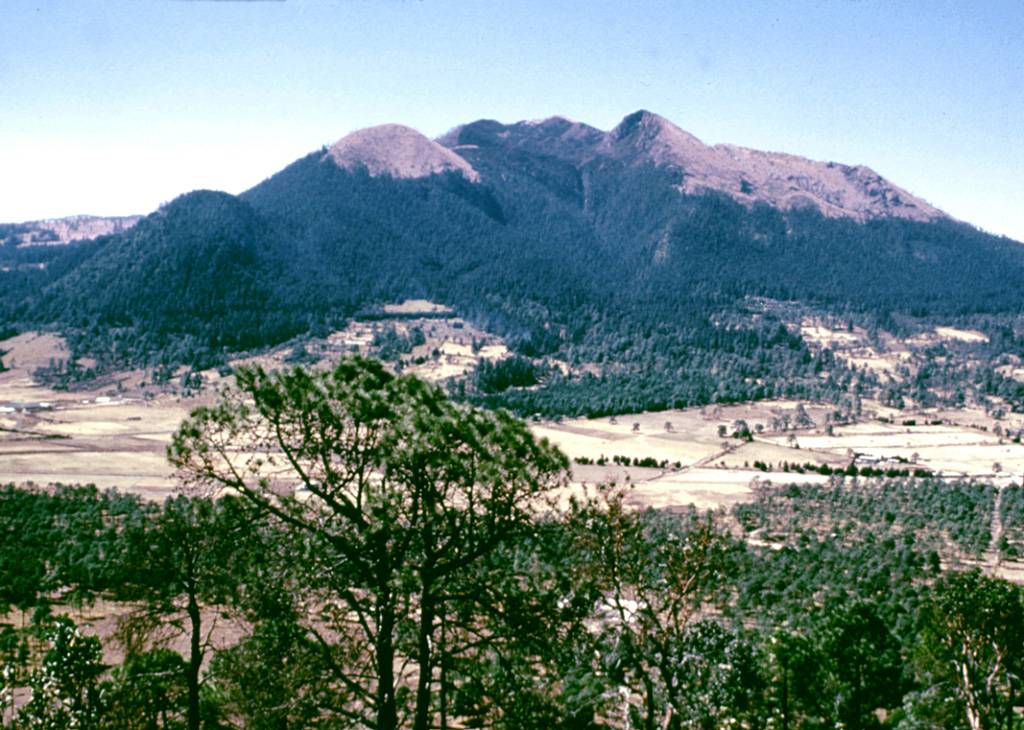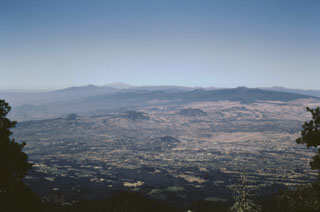Global Volcanism Program | Image GVP-10099

Volcán Ajusco, the highest peak of the Chichinautzin volcanic field, is seen here from the summit of the Xitle scoria cone to the NE. The Pliocene-Pleistocene Ajusco consists of lava domes surrounded by block-and-ash flows. During the Pleistocene the NE flank collapsed, producing a debris avalanche that traveled 16 km. Late-stage eruptions produced more mafic lava flows from flank vents, marking a transition to the monogenetic volcanism of the Chichinautzin volcanic field.
Photo by Lee Siebert, 1998 (Smithsonian Institution).
![]() This image is made available under the Public Domain Dedication CC0 license, but proper attribution is appreciated.
This image is made available under the Public Domain Dedication CC0 license, but proper attribution is appreciated.
Keywords: volcanic field | lava dome

Chichinautzin
